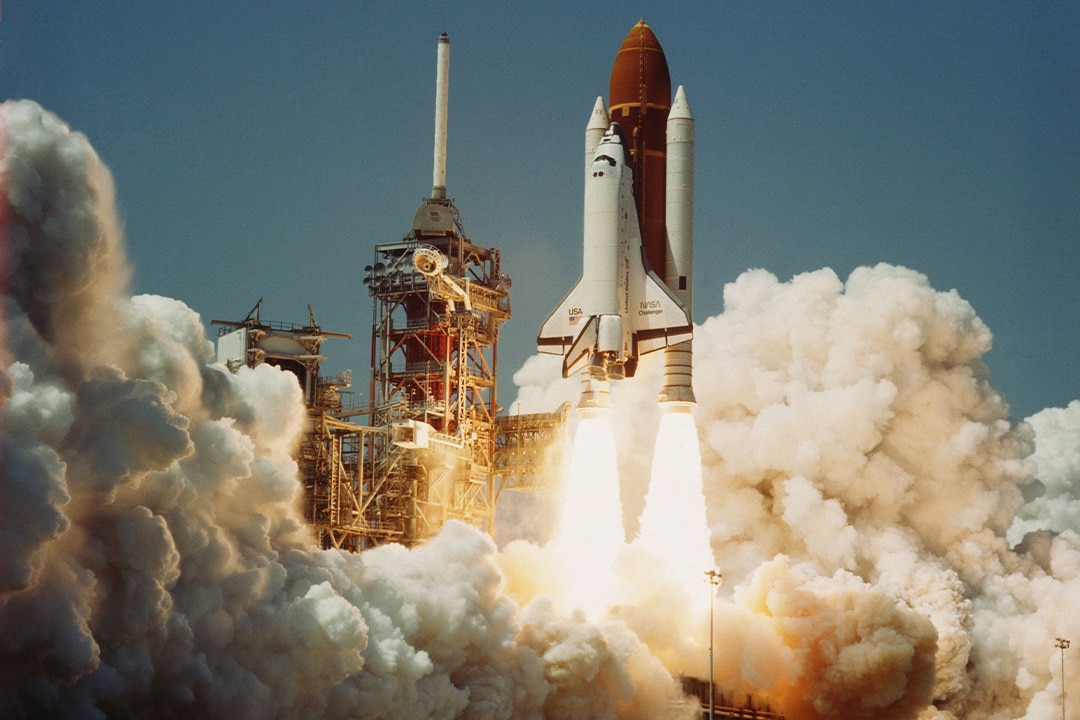Create a free profile to get unlimited access to exclusive videos, sweepstakes, and more!
NASA confirms large fragment of Space Shuttle Challenger found in the Atlantic Ocean
It's the biggest piece recovered in 25 years.

In the wake of the Apollo program, NASA set its sights on developing a more permanent presence in space. The crown jewel of that effort is the International Space Station, where we have maintained a constant human presence in low-Earth orbit for more than two decades. You can hear those stories from the astronauts who lived them in The Wonderful: Stories from the Space Station. That station is the result of an incredible international effort which relied heavily on NASA’s Space Transportation System, commonly called the Space Shuttle.
While the Space Shuttle successfully built large portions of the ISS, launched the Hubble Space Telescope and scores of other satellites and scientific instruments, and ferried astronauts on dozens of successful exploratory missions, it wasn’t without its costs. Tragedy struck the Space Shuttle twice during the life of the program, once in 2003 when Columbia broke up on re-entry, and once before that, in 1986 when Challenger was lost during launch.
On the morning of Jan. 28, 1986, 73 seconds into its 10th flight, Challenger experienced a fatal malfunction resulting in the loss of the crew and the craft. It was carrying seven crew members, including schoolteacher Christa McAuliffe, as well as the TDRS-B communications satellite. In addition to launching the satellite, the crew had plans to study Halley’s Comet, which was on approach at the time.
RELATED: First American woman to walk in space becomes first woman to dive to deepest spot on Earth
Frigid temperatures on the day of launch stiffened O-rings in the right solid rocket booster. As a result, hot pressurized gas breached the seal and ultimately caused the shuttle to breakup. Wreckage from the disaster largely fell into the Atlantic Ocean, where some of it was recovered during a months-long search effort following the accident.
Recently, a History Channel documentary crew was looking for World War II-era aircraft sunken off the East Coast of Florida when they stumbled upon something unexpected. Partially buried in the silt of the seafloor, divers found a large humanmade object which NASA has confirmed to have belonged to the ill-fated shuttle. It’s one of the largest pieces of wreckage ever found and the first to be discovered since pieces of left wing washed ashore in 1996. Divers recognized 8-inch square tiles on the surface of the fragment jutting up from the ocean floor which, when coupled with the proximity to the Kennedy Space Center, prompted them to contact NASA.
“Challenger and her crew live on in the hearts and memories of both NASA and the nation. Today, as we turn our sights again toward the Moon and Mars, we see that the same love of exploration that drove the Challenger crew is still inspiring the astronauts of today’s Artemis Generation, calling them to build on the legacy of knowledge and discovery for the benefit of all humanity,” said Kennedy Space Center Director Janet Petro, in a statement.
NASA reviewed footage of the artifact, which is believed to be at least 15 feet by 15 feet in size. The thermal tiles present on the wreckage suggest it was part of the belly of the shuttle, designed to endure the intense heat of re-entry. At present, the fragment remains on the ocean floor while NASA considers next steps. Legally, any Shuttle artifacts are the property of the U.S. government and must be turned over. What happens to the fragment when and if NASA recovers it from the ocean remains to be seen. Most other pieces of Challenger and Columbia are in storage, with the exception of a couple of pieces on display at Kennedy Space Center Visitor Complex.
A documentary of the discovery is slated for broadcast on the History Channel on Tuesday Nov. 22, as part of a broader presentation on the Bermuda Triangle. NASA notes that the artifact was discovered near Florida’s Space Coast, considerably northwest of the Bermuda Triangle.


























